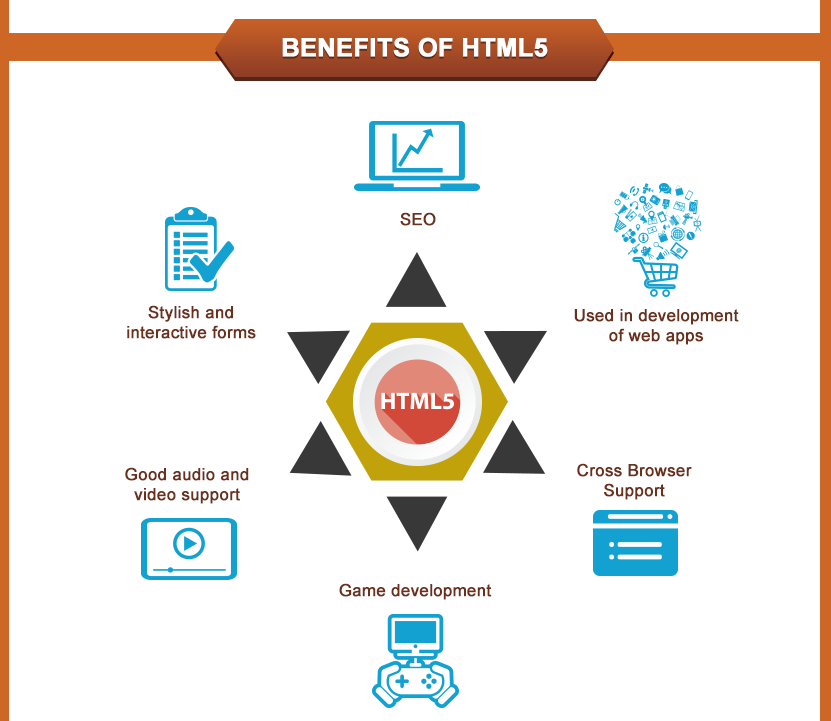Top 10 Major Benefits of HTML 5
If you're new to web development, or looking to brush up on some HTML skills, read on to explore some great new features in HTML5.
Join the DZone community and get the full member experience.
Join For FreeWhat is the most preferred technology framework for front-end development? The advent of the mobile-first era has led more and more developers to develop mobile friendly websites with HTML5. The major benefits of HTML5 are evolving each day to provide functionalities on par with native technologies.
Owing to its new and powerful features for both developers and end users, it is already used to code websites around the world.HTML5 is enabled by all new modern desktops and mobile browsers, or for mobile app web development.
The Major Benefits of HTML5, and Why We Should Use Them
1. Using HTML5 helps to eliminate most <div> tags and replace them with semantic elements. Designers can now use cleaner and neater code.
2. Make a more detailed understanding of the structure of a page with the help of HTML5.
3. With its new features and standards, HTML5 makes it easier to create front-end application such as drag and drop tools, wikis, discussion boards, and other useful elements.
4. Share where you are in the world with the help of Geolocation. You can do this using your IP address, wireless network connection, the cell tower your phone is talking to or dedicated GPS hardware to calculate the latitude and longitude from information sent by satellites. With the new HTML5 Geolocation, APIs make location directly available to any HTML5 compatible browser based application.
5. HTML5 provides a smarter solution to specify the files that the browser should cache. The pages can be loaded correctly even when offline.

6. In place of reduction in cookie size, HTML5 allows you to use session Storage and local Storage. Store the structured data temporarily, not on a permanent basis.
7. The standardized code of HTML5 elements increases the semantic value of the web page. With the specific tags for the headers, nav, footers, etc, the designers know the meaning and purpose in the whole format.
8. The major benefits of HTML5 include elegant forms, user interface enhancements, reduced need for JavaScript, and forms validation native to HTML.
9. Look for greater consistency by adopting HTML5 to code a web page on one site compared to another. You can easily understand how a web page is structured and make it easier for designers.
10. HTML5 has many features including <video>, <audio>, charts, high-quality drawings, animations, and the integration of SVG content. It is easy to integrate multimedia and graphical content to the web without using flash and third party plugging. The semantic value of the document can be enriched by new elements like <section>, <article>, <header>, <nav>, and more.

A Few More New Features in HTML5
The introduction of <figure> element to associate captions with their image counterparts
The <small> element refers to small print; it can be denoted as the correct wrapper for this information.
HTML 5 removes the <type> attribute altogether.
The use of quotes can be dependent on the users.
<Content editable> allows the user to edit any of the text contained within the element, including its children.
HTML5 offers email inputs that allow you to instruct the browser to allow only strings confirming email addresses.
Placeholders and local storage grouped in for the Convenience stake in HTML5.
Easily create sliders with the range of input.
Start using HTML5 in your design languages, this is just an overview. There is a lot more to know about HTML5.
Opinions expressed by DZone contributors are their own.

Comments